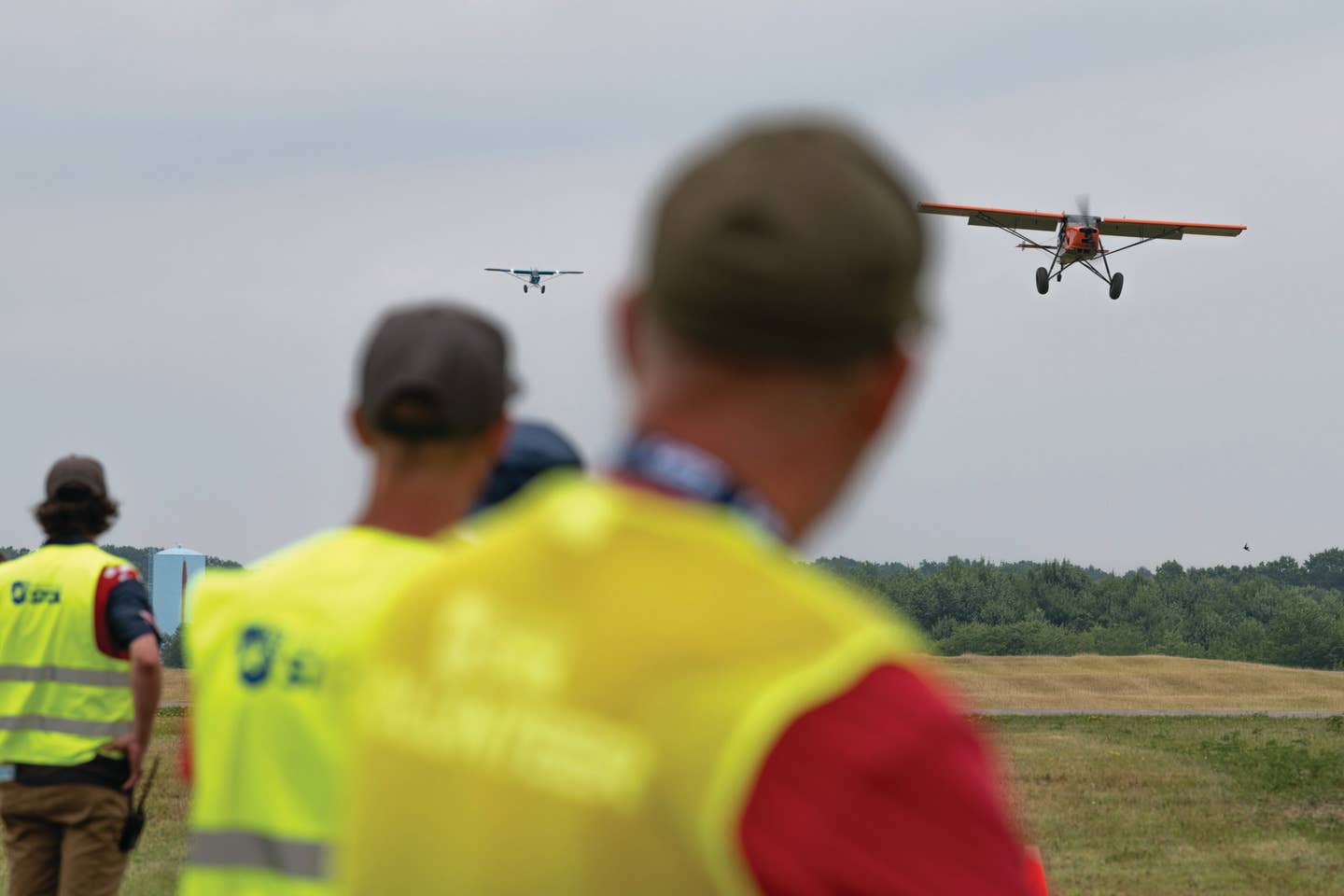C3.AI Top Executive Possesses High Aviation Quotient
Flying is an important aspect of Tom Siebel’s life, and training is the foundation.

Tom Siebel, the chairman and CEO of C3.AI, poses outside company headquarters in Redwood City, California. [Jeff Berlin]
Whether you immediately recognize the name Tom Siebel or not, you’re likely familiar with the companies he’s led—Oracle, Siebel Systems, and C3.AI. Siebel is founder, president, and chairman of C3.AI. And if you’re curious, or even concerned, about pilots with actual intelligence being replaced by artificial intelligence, you’ll be as interested as I was to hear Siebel’s opinion about it. More on that later.
One of the things I love about aviation is that it’s the great equalizer. Being a pilot is a shared space that seems to allow who you are and what you’ve accomplished melt into the background for a while allowing the experience and joy of flying an aircraft to become the tie that binds. And if you’re paying attention, there’s almost always something you can learn from listening to another pilot.
If you're not already a subscriber, what are you waiting for? Subscribe today to get the issue as soon as it is released in either Print or Digital formats.
Subscribe NowSiebel started flying in the early 1980s. Considering the training fleet of the day—the airframes, avionics, interiors, and engines—not much was new or exciting other than the intrinsic value of exploring the science and fun of learning to fly. Like many pilots, he stepped away from flying for a while but never lost his love of aviation.
A few years later, Siebel found himself back in the seat of a GA aircraft—a Cirrus SR22—only to discover that a great deal had changed. Mesmerized, as we all were at the time, he described the integration of technology in a piston GA aircraft as “almost unimaginable.” Imagine having last climbed out of steam gauge (circa mid-1950s design) aircraft and being introduced to a sleek, composite, glass-cockpit, parachute-equipped aircraft with more bells and whistles than a model train museum. Clearly a great deal had changed, and he was ready to jump in again and not look back.
Aviation is a huge part of Siebel’s life—it’s an invaluable business tool, a source of recreation, and the mechanism to support some of his philanthropic endeavors. As one might expect of someone of his stature, he owns a Boeing BBJ, but he never once mentioned it in our conversation—probably because he can’t fly it inverted like the GB1 GameBird that he is enamored with.
Listening to Siebel talk about his aviation experience is fascinating and inspirational. As I mentioned earlier, if you pay attention, it’s easy to learn from fellow aviators, and I did. Something that fascinated me about his aviation experience (and inspired me to do better) is his unwavering commitment to safety and training.
“I’m a super enthusiastic pilot who likes to be safe,” Siebel said.
And it shows. Once, while getting some mountain flying training with a CFI, he inadvertently got into a spin while executing an aggressive 180-degree turn to simulate retreating from a canyon. That experience prompted him to get spin training, which as he explained, “the next thing you know I own a GameBird.”
Siebel shared that he flew 300 hours last year—a big number for anyone who doesn’t fly for a living, let alone someone who’s busy day job is running a Fortune 100 tech company. But even more impressive is the fact that 50 percent of that time was devoted to training and becoming a better, safer pilot. Staying proficient in all five of the aircraft he flies certainly requires training, but dedicating half of one’s flight time to that speaks volumes.
We all have an intelligence quotient (IQ) and an emotional quotient (EQ). If pilots have a safety quotient (SQ), an ability to understand, assess, and manage the need to be safe and proficient and to take the steps necessary to maximize and maintain that, I’d say that Siebel’s SQ is very high, and he continues to stack the deck in his favor.
To that end, his new love, which also makes him a safer pilot in the realm of unusual attitudes and upset recovery, is aerobatics—something he didn’t start until he was in his 60s. His beautiful GB1 GameBird comes out of the nest for those flights of fancy. Siebel trains with world champion and aerobatic pilot Sean D. Tucker (another pilot whose SQ is off the charts).
When not tossing the GameBird about while arguing with it over the laws of aerodynamics and physics, Siebel also has an affinity for birds that swim, owning both a Daher Kodiak and a CubCrafters XCub on floats. Also in the fun-to-fly category is his wheeled XCub.
“It’s hard to have more fun in an aircraft than in a Carbon Cub,” he said. “You can land these things anywhere. They’re unbelievable. We land in the driveway, alfalfa fields, cow pastures, mountaintops, the highway…[But] let me clarify this first—it’s lawful to land on the highway in Montana.”
His Montana ranch is also home of an annual fly-in Siebel hosts. Through his connections who share the love of aviation, his charity event generates funds to provide college scholarships for children of Montana state troopers and fish, wildlife, and parks officers.
From business to pleasure and philanthropy, aviation is woven into the fabric of Siebel’s life.
- READ MORE: In Depth With an ‘Airport Kid’
With time running short, I didn’t want to leave our conversation without asking his opinion about the role of AI in aviation. Automation in aviation (think autopilot) is nothing new, but the concept of AI (like machine learning) and the speed of its integration can be a great source of debate: Is it good thing, bad thing, and how soon will we see a required crew of two be reduced to one or even zero pilots? What should we look forward to or be cautious about?
His Q&A responses were both surprising and refreshing.
FLYING Magazine (FM): What was the first aircraft you owned?
Tom Siebel (TS): My first plane was a 140 hp Cherokee. I used to have a B36TC, a Malibu, a couple of Maules, PC6, PC12, Falcon 2000, Global Express, and others, but I’d say the planes I fly now are by far the most fun.
FM: What has been your greatest aviation experience thus far?
TS: I was able to do some formation training with the Chilean national acrobatics team. And I also trained with Sean Tucker doing formation flight in the GameBirds. It was really exhilarating and really exciting. It’s been one of the most exciting experiences of my life.
FM: What is the future of AI in the cockpit? Will we see pilotless aircraft any time soon?
TS: I don’t think so. The UAV problem is very difficult to solve. C3.AI has built some of the largest and most complex enterprise scale AI applications on earth for places like the United States Air Force, the intelligence agency, and others.
We can spool up 10,000 virtual machines in the cloud doing 24-bit floating point operations, say 20,000 of them on three-, four-, or five-gigahertz cycles—this is an unimaginable computing capacity. A $100 million worth of computing capacity to train a learning model, which actually has very, very little intelligence and it requires two gigawatts of power. The human brain has 60 billion neurons that make 100 trillion analog connections simultaneously. And it operates on only 17 watts of power.
As somebody who is a leader in artificial intelligence and knows something about it, I do not think we’re going to see fully autonomous, ground-based terrestrial vehicles or aircraft really anytime soon. I don’t think we need to worry about [pilotless aircraft] anytime soon. That being said, will artificial intelligence assist pilots in single pilot operations? Absolutely.
I think one of the most sophisticated applications of computing in aviation—I’m not sure there’s any artificial intelligence in there—is definitely what Garmin has done with this Safe Return system. That’s almost unimaginable.
FM: What is the best application of AI in aviation?
TS: Predictive AI is a good example. We’ve taken all of the aircraft weapons systems, F-15, F-16, F-18, F-22, F-35, KC-135, and aggregated all of the telemetry off these systems, all of the maintenance data, all of the flight history, all the information about flight stories, and the weather where they were flying. We’ve aggregated about 100 terabytes of data in a tool called PANDA (Predictive Analytics and Decision Assistant).
We run those data through machine-learning models to predict system failure before it happens. And so the idea is, if we can identify the system, auxiliary power unit, flap actuator, igniter, whatever it might be, and can identify it’s failure 50 or 100 flight hours before it happens, we can then dispatch the personnel and the materiel to converge with the aircraft, maintain it, and it flies off and doesn’t break.
In doing so we’re able to increase aircraft availability. The United States Air Force has 5,000 aircraft, and this AI can increase availability by 25 percent on any given day.
FM: Could AI have changed the outcome of any historic crashes, like US Airways 1549 “Miracle on the Hudson,” or United Airlines Flight 232 “Impossible Landing?”
TS: Miracle on the Hudson: Could a computer have pulled that off? I don’t think so. Impossible Landing: No hydraulics, no flight controls. Whoever was flying that was thinking out of the box. A computer’s not going to do that. No way, no how.
FM: What do you find most compelling about aviation right now?
TS: I think the most interesting thing I’m seeing in aviation is things like what Sean Tucker is doing with the Bob Hoover Academy, and I think the work that AOPA has done with their STEM curriculum, using aviation as a means of teaching science, math, and engineering.
This feature first appeared in the July/August Issue 949 of the FLYING print edition.

Sign-up for newsletters & special offers!
Get the latest FLYING stories & special offers delivered directly to your inbox







